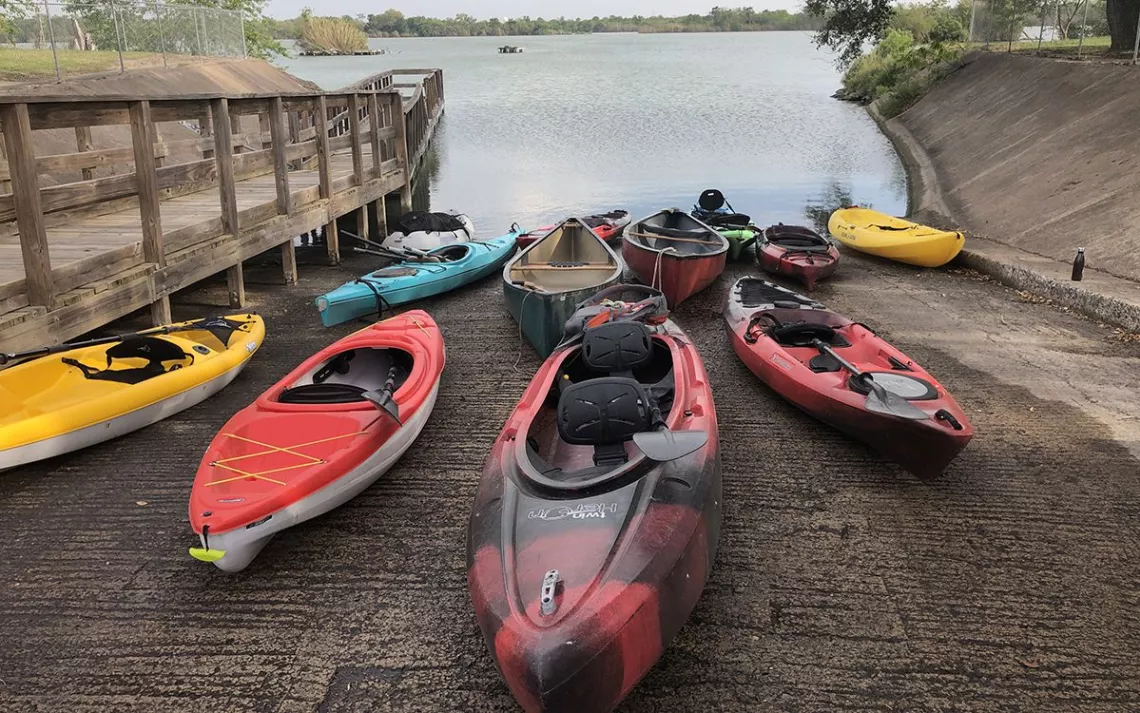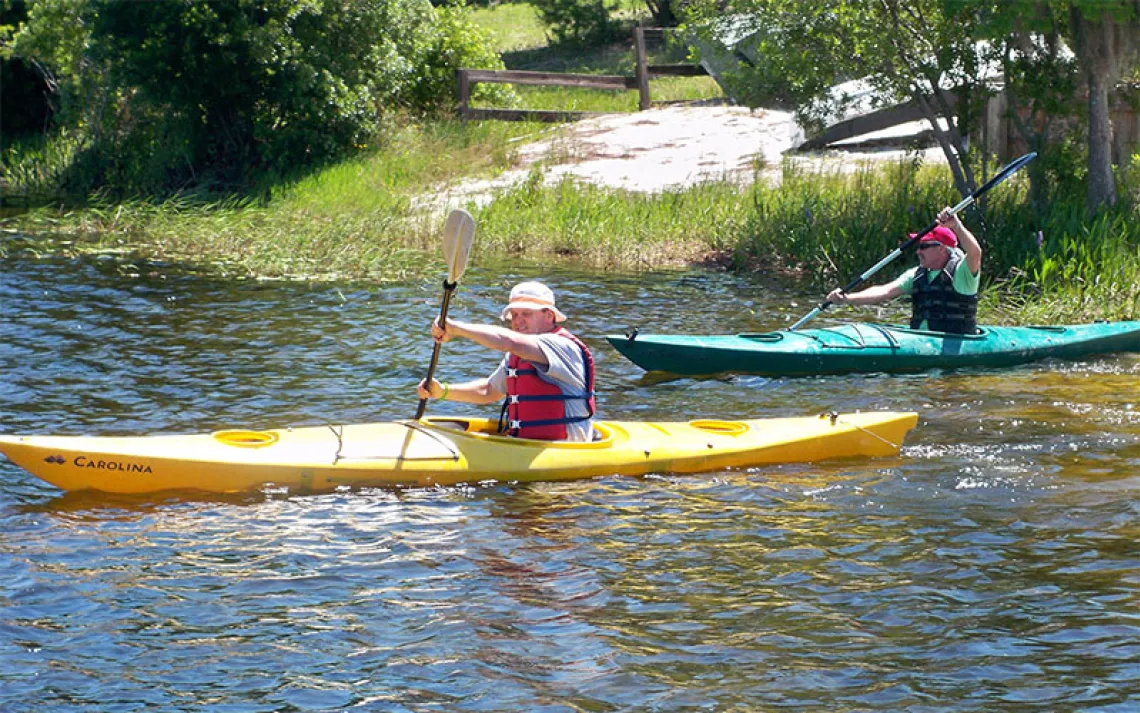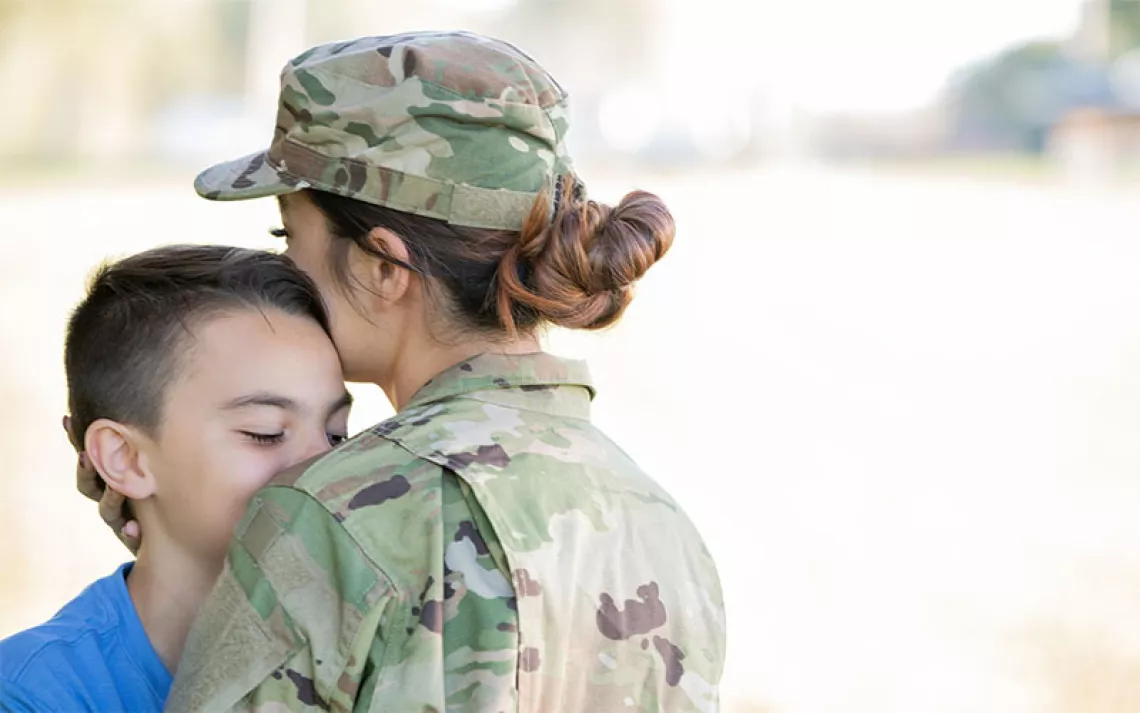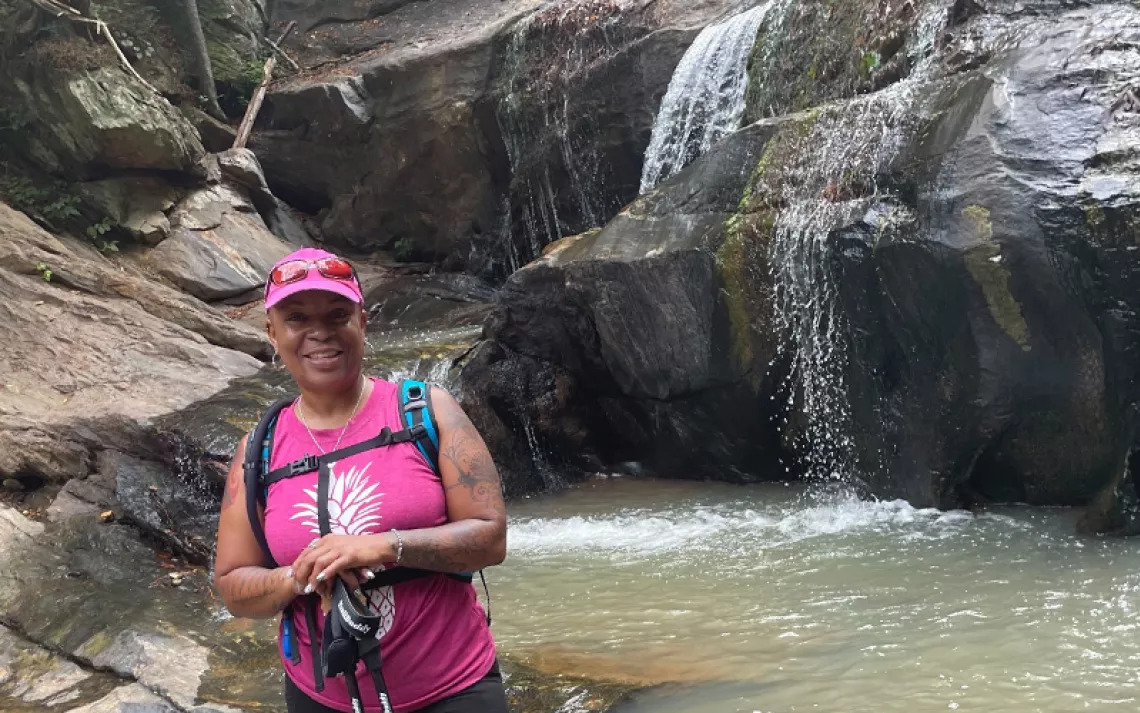“Not a War Zone”: Veterans Visit the Texas Borderlands
A trip along the Rio Grande reveals President Trump’s one-sided war

Photos by Heather Wilson
On January 10, President Donald Trump and Senator Ted Cruz stood on the banks of the Rio Grande near Mission, Texas, surrounded by armored vehicles and helmeted Border Patrol officers and agents. During an hour-long press conference, they painted a grim picture of the Rio Grande Valley region, citing violence and what they characterized as a crisis of illegal immigration. Trump criticized opponents of wall funding in Congress, saying, “If they don’t mind death and crime and all of the problems they cause by not having a barrier, then they’ll see what happens: national emergency.” In February, Trump followed through on this threat and declared a national emergency in order to fund the border wall and other border security measures.
A month later, on a warm, spring afternoon, Robert Vessels launched his canoe down a boat ramp on the Rio Grande at nearly the same spot where President Trump had held his press conference. As he paddled, Vessels noticed little that aligned with Trump’s warnings of a crisis on the border. But the contrast between the two sides of the river was stark: On the Mexican side, people were out picnicking in public parks and playing music from stereos. On the US side, he saw only abandoned buildings, defoliated vegetation, and guard towers.
“It seemed very much like a one-sided war we’re waging with a nonexistent threat,” Vessels says. “Everyone on the Mexican side is having a great time enjoying the riverfront property, and our side is militarized.”
Vessels, who spent five years in the army and completed tours in both Iraq and Afghanistan, does not use the term “militarized” lightly. “I did go in thinking everyone talking about the militarized border was exaggerating,” he says. “I know how easy it is to over-exaggerate with such an emotionally charged subject, but it’s definitely militarized down there. Border Patrol had better weapons and personal equipment than I had in Afghanistan, which was kind of infuriating.”
The paddling trip was part of a fact-finding mission that Vessels and seven other veterans had organized with the Sierra Club Military Outdoors program, because they wanted to see the border region for themselves. Along with paddling a portion of the Rio Grande, the group of eight joined two Indigenous activists from the the Tohono O'odham nation to camp out for over a week in the Rio Grande Valley at the National Butterfly Center, a 100-acre nature reserve that is home to over 200 species of butterflies. Much of that habitat could be lost if the reserve is split by the border wall proposed by the Trump administration.
For Vessels, who now serves as a senior campaign representative for the Military Outdoors program, the border trip had both humanitarian and environmental components. He was born in Texas and describes himself as an “accidental conservationist” who became involved with the Sierra Club as a way to process his experience overseas. “As a veteran, I know the type of trauma that can persist in everyday life after returning to the states: moral injuries, struggles with transitioning, isolation,” he recently wrote. “I’ve been able to confront my past and heal through travel through American public lands.”
“You can’t really separate environmental justice and social and racial justice,” he says. “The wall is going up and stealing land [through eminent domain] from communities of color and Indigenous communities and then separating them from friends and family.”
While at the butterfly center, the group met with a Vietnam War veteran who stands to lose much of his land, which has been in his family since the Spanish land-grant era, to border wall construction. The two Tohono O'odham women also shared stories of how their communities in southern Arizona and northern Sonora have been split by the increasingly fortified US-Mexico border.
 Veterans at the National Butterfly Center in the Rio Grande Valley
Veterans at the National Butterfly Center in the Rio Grande Valley
Toward the end of their trip, the veterans witnessed a jarring reminder that families are still being separated along the border: A migrant transport bus sped past, children peering out from its barred windows.
Karla Terry, another army veteran who participated in the border trip, chokes up when she recalls seeing the bus. “Imagine being a child at the moment when you’re the most scared,” she says, “like losing your mom or dad or sibling at the grocery store and not knowing where they are, even if it’s just for five minutes. I remember how terrified as a child I was to have that happen.”
Terry grew up not far from the border in Tucson, Arizona, and joined the military when she was 17 in part because she wanted to provide for her young daughter and didn’t feel like she had other options. “My time in the military made me realize that the government is really good at preying on vulnerable populations,” she says. “That’s how they recruit, and that’s kind of their game.”
After leaving the military, Terry struggled with alcoholism and, like Vessels, found solace in the natural world. She traveled to Alaska to ally with the Gwich'in people who are fighting drilling in the Arctic National Wildlife Refuge, and she sees similarities between what’s happening there and the eminent domain laws being used to take land for the border wall. “We use resources and people and we discard them. We make refugees all over the world and then we fail to take care of them. We create very damaged and broken people as soldiers and sailors and marines.”
She had been driving a truck for work, but Terry says the border trip helped inspire her to look for a job in Arizona that will allow her to be more involved with border issues. “I don’t have any political affiliations,” she says. “I don’t have any religious affiliations. I did a lot of terrible things as an alcoholic, and I’m doing my best to repair those by doing right by my fellow man. I don’t have to agree with you; I just have to be decent.”
“There’s a hint of madness to our border policies,” says Amine Tourki, who made his first trip to the border to camp at the butterfly center. Tourki immigrated to New York City from Morocco as a teenager and later served in the Iraq War as a translator. He is currently working to set up a nonprofit transition program for military translators in New York. “I’m used to the idea of trying to explain one side to the other, and trying to extend empathy to both sides and build bridges,” he says. “That’s my background.”
He notes similarities between the debate over the border wall and the early years of the Iraq War when, he says, military leaders hadn’t yet defined US goals. “Right now we’re just imposing a structure and doing a strategy that is not geared toward the problem,” he says. “[The wall] is a solution in search of a problem. We’re antagonizing a lot of people, just on our side [of the border] alone. We’re treating everyone who is crossing the border as the same and tossing them into a prison system.”
Tourki thinks using a wall to stop immigration is like trying to stop the rain. “We need moral, robust foreign-policy solutions that are well thought out,” Torka says, including more aid abroad.
For his part, Vessels is already thinking about the next border trip. “I personally think the crisis is the militarization of border communities,” he says. “I would like to get back out there with more veterans to help the volunteer-run campaigns who are living that reality daily. Some folks have been fighting that border wall for 20 years. A lot of it is getting people out there and showing them it’s not a war zone.”
 The Magazine of The Sierra Club
The Magazine of The Sierra Club



